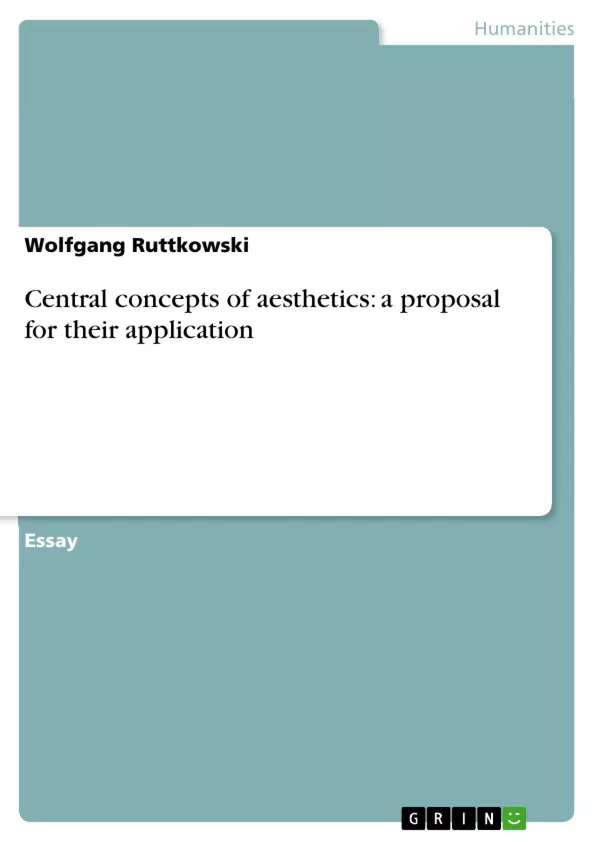Contents:
I. Prior Attempts at Sub-Dividing Aesthetic Concepts
II. Some Preliminary Questions:
1. How Do We Use the Term “Art”?
2. What Is The Difference Between “Art Object” and “Aesthetic Object”?
3. If the “aesthetic” and “artistic” values of an artifact are not the same, what is their relevancy for original works of art and their perfect copies?
4. Can Art - In Spite Of Its Dependency On The “Art World” and On Its Recipients - Contain Generally Valid Meaning?
III. The Central Concepts “aesthetic - artistic - beautiful”
IV. Intersections Of the Central Concepts
V. The Nomenclature Of Aesthetic Qualities, Experiences, And Objects
VI. Summary In The Form Of Suggestions
Table of Contents
- I. Prior Attempts at Sub-Dividing Aesthetic Concepts
- II. Some Preliminary Questions:
- 1. How Do We Use The Term “Art”?
- 2. What Is The Difference Between “Art Object” and “Aesthetic Object”?
- 3. If the “aesthetic” and “artistic” values of an artifact are not the same, what is their relevancy for original works of art and their perfect copies?
- 4. Can Art In Spite Of Its Dependency On The “Art World” and On Its Recipients Contain Generally Valid Meaning?
- III. The Central Concepts “aesthetic - artistic - beautiful”
- IV. Intersections Of the Central Concepts
- V. The Nomenclature Of Aesthetic Qualities, Experiences, And Objects
- VI. Summary In The Form Of Suggestions
Objectives and Key Themes
This text aims to propose a comprehensive framework for understanding and applying central concepts of aesthetics, specifically focusing on the relationship between "the Artistic" and "the Aesthetic." The author seeks to clarify how these concepts relate to art objects, aesthetic objects, and the experience of art.
- Defining and differentiating "the Artistic" and "the Aesthetic"
- Exploring the relationship between art objects and aesthetic objects
- Investigating the role of cultural institutions and individual recipients in shaping aesthetic experiences
- Examining the relevance of aesthetic and artistic values in the context of original works and perfect copies
- Developing a systematic approach to understanding and classifying aesthetic concepts
Chapter Summaries
- I. Prior Attempts at Sub-Dividing Aesthetic Concepts: This chapter examines various attempts to categorize and define aesthetic concepts, drawing on the work of Sibley, Svoboda, Dessoir, and Henckmann. The author analyzes different systems and their shortcomings, emphasizing the need for a comprehensive and flexible framework.
- II. Some Preliminary Questions: This chapter introduces fundamental questions that are crucial for understanding the relationships between “the Artistic” and “the Aesthetic.” It explores the meaning of "art," the distinction between art objects and aesthetic objects, and the role of cultural institutions and individual recipients in shaping aesthetic experiences.
Keywords
This text revolves around key concepts such as aesthetic experience, art object, aesthetic object, artistic value, aesthetic value, aesthetic categories, cultural influences, and the role of the "art world" in shaping artistic and aesthetic judgments.
- Arbeit zitieren
- Dr. Wolfgang Ruttkowski (Autor:in), 1999, Central concepts of aesthetics: a proposal for their application, München, GRIN Verlag, https://www.grin.com/document/82646



